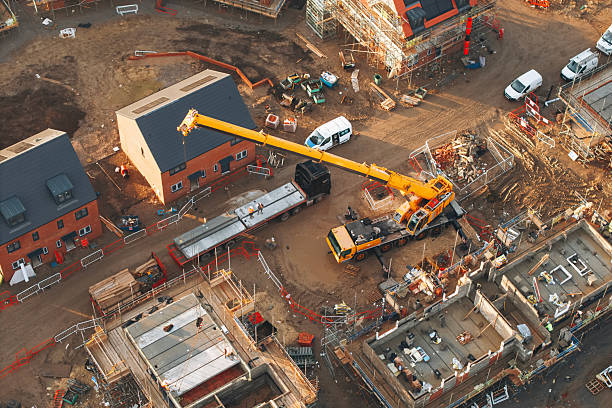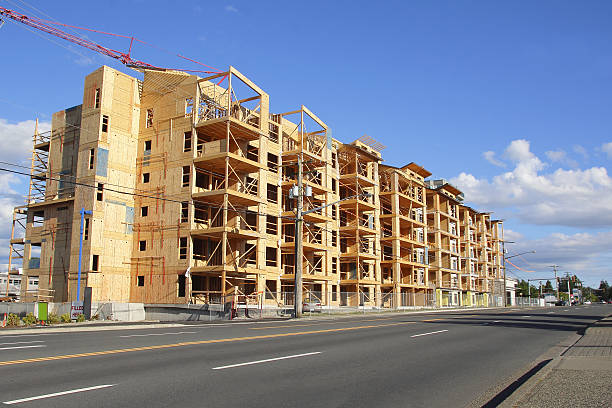How to Do Construction Submittals: A Step-by-Step Guide
Construction submittals are an important part of any building project. They act as a link between design and construction. Contractors, architects, engineers, and owners all rely on them.
Table of Contents
ToggleSubmittals help avoid delays, mistakes, and costly rework. Think of them as checkpoints. Before any material or system is installed, someone reviews it to make sure it matches the plans.
At JDJ Consulting Group, we stress organized submittal management. It saves time, prevents errors, and keeps projects on schedule. Understanding the process helps teams stay compliant and avoid common problems.
Construction Submittal Flow
What Are Construction Submittals?
A construction submittal is a document, sample, or mock-up sent for approval before work starts. It shows that materials, products, or systems meet project requirements.
Common types of construction submittals:
| Type of Submittal | Purpose | Example |
|---|---|---|
| Shop Drawings | Show exact details for fabrication and installation | Steel beams, HVAC layouts |
| Material Data | Technical info from manufacturers | Paint, windows, flooring |
| Samples / Mock-ups | Physical example to check quality | Tile, stone, wood finishes |
| Manuals | Instructions for operation and safety | Elevators, fire alarms |
Submittals are more than paperwork. They protect everyone. Contractors confirm the work is correct. Architects verify design intent. Owners ensure their vision is realized.
Why Construction Submittals Are Important
Submittals are a key part of quality control. They help in many ways:
Check Compliance
Submittals confirm that materials meet project specs and building codes.Prevent Errors
It is cheaper to catch problems in submittals than during construction.Document the Project
Approved submittals act as a record of decisions.Improve Team Coordination
Everyone works from the same documents. This reduces miscommunication.
Here’s a quick summary of the benefits:
| Benefit | Impact |
|---|---|
| Early Problem Detection | Avoid rework and delays |
| Quality Assurance | Materials match design intent |
| Accountability | Clear record of approvals |
| Team Alignment | Keeps everyone on the same page |
Step-by-Step Process for Construction Submittals
Managing submittals may seem tricky, but breaking it into steps makes it easier. Here’s how to handle them efficiently.
Step 1 – Review Project Specifications
Start by reading the project manual and contract carefully. Look for:
Required submittal types
Formats and number of copies
Submission deadlines
Approval authority (architect, engineer, or owner)
Knowing the rules upfront prevents late or incomplete submittals.
Step 2 – Prepare Submittals
The contractor or subcontractor prepares the submittal package. It usually includes:
Cover sheet with project info
Shop drawings (if applicable)
Manufacturer data sheets
Samples or digital images
A complete package saves time during review.
Step 3 – Contractor’s Review
Before sending to the design team, the general contractor checks:
Accuracy of drawings and data
Compliance with plans and specifications
Correct labeling and references
This step filters errors and speeds up approvals.

Step 4 – Architect/Engineer Review
The design team reviews the submittal to ensure it matches the design intent. They can:
Approve it
Approve with comments
Reject and ask for changes
Clear notes from this step help avoid misunderstandings later.
Step 5 – Owner/Stakeholder Review (If Required)
Sometimes the owner or consultant reviews for:
Material quality
Finish and aesthetics
Special performance requirements
This ensures the project meets all expectations.
Step 6 – Final Approval & Distribution
Once approved, the submittal is:
Returned to the contractor
Distributed to subcontractors for installation
Used as a reference during construction
Submittal Review Status
Source: JDJ Consulting Project Data 2025
Submittal Log Example
A submittal log helps track status, deadlines, and approvals. Here’s a simple example:
| Submittal Item | Submitted By | Date Submitted | Reviewer | Status | Comments |
|---|---|---|---|---|---|
| Paint Colors | Contractor | Aug 10, 2025 | Architect | Approved | None |
| HVAC Layout | Subcontractor | Aug 12, 2025 | Engineer | Revise | Missing duct dimensions |
| Stone Sample | Contractor | Aug 15, 2025 | Owner | Approved | Match approved palette |
| Fire Alarm Manual | Subcontractor | Aug 16, 2025 | Consultant | Pending | Awaiting signature |
Using a log keeps everyone on the same page and helps prevent delays.
Best Practices for Managing Construction Submittals
Handling submittals smoothly helps avoid delays, errors, and confusion. Here are some best practices that contractors and project teams can follow:
Use a Submittal Log
Keep a clear record of all submittals, their status, and deadlines. This prevents items from being missed or delayed.Submit Early
Don’t wait until the last minute. Early submissions allow enough time for review and corrections.Digitize the Process
Use construction management software like Procore or Autodesk Construction Cloud. Digital tools make tracking easier and reduce paper errors.Maintain Clear Communication
Keep the architect, engineer, and owner informed. Share updates, questions, and approvals promptly.Cross-Check with Contract Documents
Always verify that submittals match the specifications in the contract and project manual.
Quick Reference Table – Submittal Management Tips
| Tip | How It Helps |
|---|---|
| Maintain a Submittal Log | Tracks all items and deadlines |
| Submit Early | Provides time for corrections |
| Use Software Tools | Reduces errors and improves access |
| Communicate Regularly | Prevents misunderstandings |
| Check Contract Documents | Ensures compliance with project specs |
Following these best practices keeps the submittal process organized and efficient. Teams can spot problems early, save costs, and keep the project on schedule.
Common Challenges and How to Avoid Them
Even with careful planning, submittals can face problems that delay construction. Here are the most common challenges and ways to prevent them:
1. Late Submissions
Problem: Submittals are sent past deadlines, delaying approvals and construction.
Solution: Create a proactive submittal schedule. Track deadlines in a log or software. Submit items well before they are due.
2. Incomplete Packages
Problem: Missing documents, drawings, or samples slow down review.
Solution: Use a checklist for every submittal. Double-check that all required items are included before submission.
3. Ambiguities in Specifications
Problem: Confusing or unclear specifications lead to incorrect submittals.
Solution: Submit Requests for Information (RFIs) early. Clarify details with architects or engineers before preparing submittals.
4. Miscommunication Between Teams
Problem: Contractors, subcontractors, and design teams may interpret instructions differently.
Solution: Hold regular coordination meetings. Share updates and approvals to keep all teams aligned.
Quick Reference Table – Submittal Challenges and Solutions
| Challenge | Common Impact | Solution |
|---|---|---|
| Late submissions | Project delays | Plan schedule; submit early |
| Incomplete packages | Rejected or delayed approvals | Use a checklist; verify all items |
| Ambiguous specifications | Wrong materials or errors | Submit RFIs; clarify before preparing |
| Miscommunication | Confusion between teams | Hold regular meetings; share updates |
By spotting these challenges early and following clear processes, projects stay on track. Proactive submittal management prevents rework, extra costs, and stress for the entire team.
Tools and Technology for Submittal Management
Modern construction projects rely on digital tools to manage submittals efficiently. These tools help track, review, and approve documents faster than paper-based methods.
Why Digital Tools Matter
Real-time tracking of submittal status
Easy sharing with contractors, architects, and owners
Reduced errors and missing information
Centralized storage for approvals and documents
Popular Submittal Management Tools
| Tool | Key Features | Benefits |
|---|---|---|
| Procore | Cloud-based, real-time tracking, document storage | Keeps all teams updated and organized |
| Autodesk Construction Cloud | Integrated project management, RFIs, approvals | Streamlines communication and approvals |
| Buildertrend | Submittal tracking, scheduling, reporting | Simplifies workflows and reduces paperwork |
Tips for Using Technology Effectively
Train your team to use the software consistently.
Keep your submittal log updated digitally.
Attach all relevant files (drawings, data sheets, images).
Set automatic reminders for due dates and approvals.
At JDJ Consulting Group, we recommend using digital submittal tools for projects of any size. They reduce errors, save time, and improve collaboration between contractors, architects, and owners.
Role of Consultants in Submittals
Construction submittals can be complex, especially for large or regulated projects. Consultants play a key role in making the process smooth and error-free.

How Consultants Help
Guide Contractors on Compliance:
Consultants ensure all submittals meet project specifications, building codes, and regulations. This prevents costly rework.Review Materials and Documents:
They check shop drawings, material data, and samples to confirm quality and suitability.Streamline Approvals:
Consultants help organize submittals and coordinate reviews between architects, engineers, and owners.Prevent Costly Mistakes:
By reviewing submittals early, consultants reduce risks related to zoning, permits, and project feasibility.
Why Work with JDJ Consulting Group
Expertise in land use, permits, and construction compliance
Hands-on guidance through every submittal step
Helps keep projects on schedule and within budget
Ensures all approvals are documented and accurate
Consultants act as a bridge between the design team and contractors, making sure the project runs efficiently. Their guidance is especially valuable for developers managing multiple submittals at once.
Conclusion
Construction submittals are a vital part of any building project. They ensure materials, systems, and processes match the design intent. Proper submittal management helps avoid mistakes, delays, and extra costs.
By following the steps outlined—reviewing specs, preparing complete packages, tracking approvals, and using digital tools—projects run more smoothly. Consultants like JDJ Consulting Group can guide contractors and developers, keeping submittals compliant, organized, and efficient.
Key Takeaways:
Submittals protect quality and compliance.
Early and accurate submissions save time and money.
Digital tools improve tracking and communication.
Consultants help prevent errors and keep projects on schedule.
Work with JDJ Consulting Group to streamline your submittal process. Our experienced team of Los Angeles consultants ensures every step is handled efficiently, so your project stays on time and on budget. Call us at (818) 233-0750 to schedule your free consultation today!
Construction Submittal Checklist
Essential Items:
- Project Cover Sheet
- Shop Drawings
- Material Data Sheets
- Samples / Mockups
- Safety & Operation Manuals
- Approval Signatures
Need Expert Help?
Streamline your construction submittals with JDJ Consulting Group.
Construction Submittals – FAQs
1. What is a construction submittal?
A construction submittal is a document, drawing, sample, or mock-up submitted for approval before construction begins. It shows that the proposed materials or systems meet project specifications. Submittals allow the design team and owner to review and approve items before installation, preventing mistakes.
Key points:
Acts as a quality checkpoint.
Confirms compliance with design intent.
Prevents errors and rework.
2. Why are submittals important in construction?
Submittals are critical because they ensure quality, compliance, and coordination. They verify that all materials, equipment, and methods meet the project’s requirements. Submittals also provide a documented record of approvals for accountability and dispute resolution.
Benefits include:
Catching potential issues early.
Confirming adherence to design and code.
Maintaining clear communication between teams.
3. Who prepares construction submittals?
Contractors or subcontractors typically prepare submittals. They gather shop drawings, material data, and samples. In some projects, consultants help ensure that the submittals meet regulations and project specifications.
Responsibilities:
Compile accurate and complete information.
Include all required documents and samples.
Coordinate with design teams if clarification is needed.
4. Who reviews submittals?
Submittals are reviewed by architects, engineers, and sometimes owners or consultants. Reviewers ensure that the proposed materials and methods match design intent, technical specifications, and safety requirements.
Review outcomes:
Approved as submitted.
Approved with comments.
Rejected and requires revision.
5. What are the main types of submittals?
Submittals come in several forms, each serving a specific purpose:
Types:
Shop drawings – detailed diagrams for fabrication and installation.
Material or product data – manufacturer specifications and technical info.
Samples or mock-ups – physical or visual examples for approval.
Operation and safety manuals – instructions for using equipment or systems.
6. How long does submittal approval take?
Approval time varies based on project size and complexity. Simple items may be approved within days, while complex items can take 1–3 weeks or longer.
Tips to avoid delays:
Submit early.
Provide complete documentation.
Use digital platforms for faster review.
7. What happens if a submittal is rejected?
When a submittal is rejected, the contractor must revise it according to reviewer comments and resubmit. Rejection usually occurs due to incomplete documents, missing data, or materials not meeting specifications.
Next steps after rejection:
Review comments carefully.
Make corrections promptly.
Resubmit for approval before installation.
8. What is a submittal log?
A submittal log is a tracking tool used to monitor all submittals. It records submission dates, reviewer comments, approval status, and due dates.
Advantages:
Keeps all team members updated.
Prevents missed deadlines.
Provides a reference for future audits.
9. Can submittals be submitted digitally?
Yes, submittals can be submitted via digital platforms like Procore, Buildertrend, or Autodesk Construction Cloud. Digital tools allow real-time tracking, reduce errors, and improve collaboration.
Benefits of digital submission:
Faster approval cycles.
Centralized storage of all documents.
Easier coordination between teams.
10. What should a complete submittal include?
A complete submittal ensures reviewers have all information to approve it.
Components include:
Cover sheet with project info.
Shop drawings or fabrication diagrams.
Material/product data sheets.
Physical samples or images.
Operation or safety manuals (if required).
Submittal Time Estimator
Estimate total review time in days:
11. How do submittals prevent construction errors?
Submittals prevent errors by allowing review before installation. Any mistakes in design, material selection, or specifications are caught early, reducing costly rework.
Examples of errors prevented:
Wrong materials delivered.
Incorrect dimensions or layouts.
Misalignment with project specifications.
12. What role do consultants play in submittals?
Consultants guide the contractor through preparing, reviewing, and submitting submittals. They ensure that everything complies with design intent, building codes, and permits.
Consultant benefits:
Identifies errors before construction.
Streamlines approvals between stakeholders.
Ensures compliance with regulatory requirements.
13. Are submittals required for every project?
Most medium and large projects require submittals. Smaller projects may have fewer submittals, but documenting critical materials or processes is still recommended to maintain quality and accountability.
14. How do contractors track submittals?
Contractors track submittals using a submittal log or digital software. The log includes submission dates, reviewers, approval status, and comments.
Tips for tracking:
Update regularly.
Share with all stakeholders.
Highlight pending or delayed approvals.
15. Can submittals affect project schedules?
Yes. Late, incomplete, or rejected submittals can delay construction. Proper planning, early submission, and clear communication help maintain the project timeline.
16. What is the difference between shop drawings and submittals?
Shop drawings are one type of submittal. They show detailed fabrication, assembly, and installation plans. Submittals include all documents, samples, drawings, and manuals submitted for approval.
17. How should contractors respond to comments on a submittal?
Contractors should review comments carefully, make required corrections, and resubmit promptly. Clear documentation of changes ensures the reviewer can approve efficiently and reduces back-and-forth delays.
18. What are common challenges in submittals?
Common challenges include:
Late submissions.
Incomplete packages.
Confusing specifications.
Miscommunication between teams.
Solutions:
Use checklists and logs.
Submit early.
Clarify ambiguous specifications.
Hold regular coordination meetings.
19. How do submittals support quality control?
Submittals support quality control by verifying materials and methods before installation. They ensure the construction meets design standards, codes, and client expectations.
Quality benefits:
Reduced rework.
Better material selection.
Accurate alignment with project plans.
20. Why work with experts like JDJ Consulting for submittals?
Experts like JDJ Consulting guide contractors and developers through every submittal step, ensuring compliance with codes, permits, and specifications. Their support reduces errors, speeds approvals, and keeps projects on schedule.
Advantages:
Professional review and guidance.
Coordination with architects, engineers, and owners.
Risk reduction and time savings.
Error: Contact form not found.






